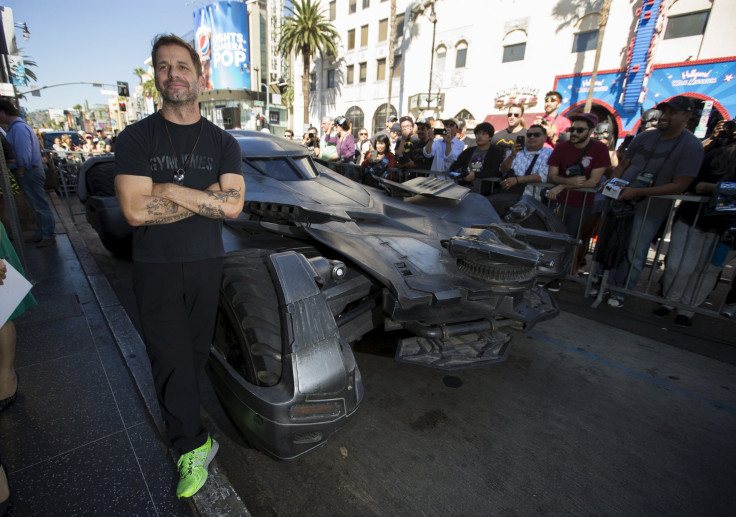‘Batman V Superman: Dawn of Justice’ Update: Zack Snyder to use mostly practical effects for Batman

In "Batman V Superman: Dawn of Justice," Zack Snyder will rely more on practical effects than digital trickery, but for the Batman character mostly.
In an interview given to Empire Magazine’s latest issue, as quoted by comicbookmovie.com, Snyder said: “It has been really fun using Batman as the answer to Superman, because he’s not flying around and acting crazy. He’s just driving around in his Batmobile, doing his Batstuff. We were able to do a lot of this practically. Batman brings that back.”
This is in keeping with the idea that Batman is a human being and does not have any superpowers, unlike Superman, Wonder Woman, Aquaman or Flash.
“Figuring out how to mix Batman’s practical approach with Superman has been an awesome experience….,” Snyder added.
The Batmobile, like in all of the previous Batman films, was created practically, to make it drivable.
However, not everything about Batman could be achieved practically. The metal armour that Batman wears to fight Superman was created using computer generated imagery (CGI), as it would be too difficult for Ben Affleck (Batman) to move freely inside the heavy costume.
“One thing that couldn’t be done before but is finally possible now is to wear the suit without the arms. They put motion sensors on my arms to recreate the rest of the suit in post production. And that allowed me to move my arms freely without looking like a robot during fight scenes,” Affleck told Studio Ciné Live, as quoted by Batman-news .
Snyder’s previous film “Man of Steel” was CGI-heavy. The digital effects were obvious on screen. Even the two trailers released of “Batman V Superman” indicate heavy use of CGI in terms of the explosions and especially in the creation of Doomsday.
Over reliance on CGI plagues Hollywood today, whether it be for disaster movies by the likes of Roland Emmerich, or alien robot warfare in Michael Bay’s films.
The advancement of CGI or computer generated imagery has reached a stage when almost everything seems achievable via the computer, even those which can be achieved practically.
“Jurassic World”, 2015’s second-most successful film -- the most successful being “Star Wars: The Force Awakens” -- was criticised by many for its over-reliance on CGI when there was much more use of practical effects in the past three films of the “Jurassic park” series.
Not all filmmakers are part of the CGI-craze that has hit Hollywood like a common-cold these days. Christopher Nolan, famous for “The Dark Knight” (2008), relies heavily on the use of practical effects on all his films, notably in his latest movie, “Interstellar.” J.J. Abrams’ also relied a lot on practical effects for “Star Wars: The Force Awakens,” so did George Miller in “Mad Max: Fury Road,” all of which were well received by audiences and critics alike.
“Batman V Superman: Dawn of Justice” will arrive in cinemas on March 25, 2016 and is supposed to set the foundation for “Justice League” movies, beginning 2017.





















